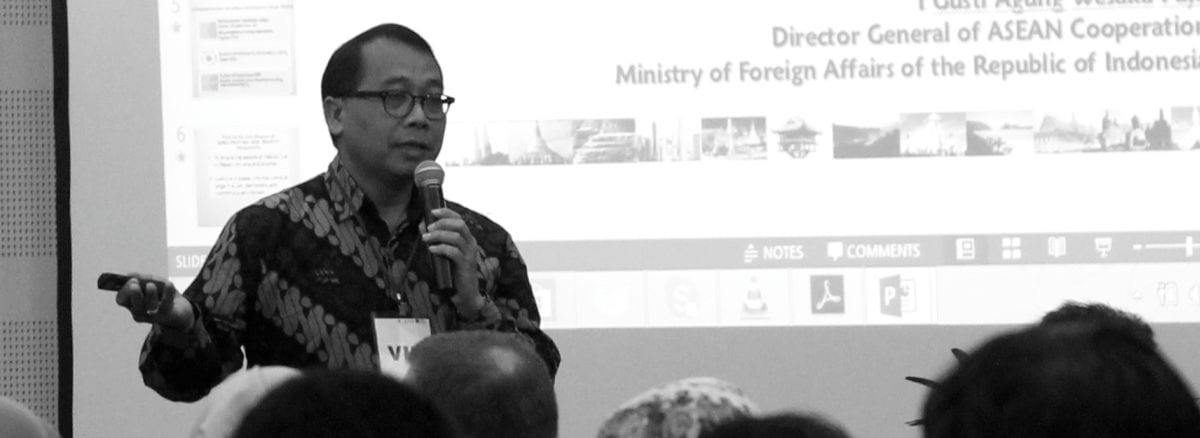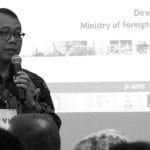ICONAS Speech Summary – Mr. Suthipand Chirathivat
Championing ASEAN Economic Community
– Mr. Suthipand Chirathivat
Mr. Suthipand focuses his discussion on the framework of championing ASEAN Economic Community by discussing it on four remarks: growing ASEAN economies and market integration, driving AEC through growing ASEAN market integration, managing AEC through sectoral and regional change by learning from Thailand’s experiences and the opportunities lies behind AEC for ASEAN people.
On first note, Mr. Suthipand highlights the growing number of ASEAN market and its integration despite global slowdown. He quoted that there are an average of 4% of GDP growth in all ASEAN 10 member countries where Cambodia, Laos, Myanmar and Vietnam turn to be the new growth center. Although so, ASEAN markets should remain its concern on the possibilities of scale back US QE, Chinese currency movements, capital flows and exchange rate fluctuations and exports slowdown. However ASEAN economies stand as 3rd biggest population in the world, with the GDP size rank 9th in the world and trade value rank 5th in the world. This shows the growth of South markets where ASEAN is more regionally integrated and globally connected than ever before although intra-states transaction remains low.
On the second note, Mr. Suthipand delivers issues on how to drive the growth of AEC through growing ASEAN market integration. AEC means single market, production base and increasing connectivity, which will allow each ASEAN country to involved in the network of global production thus allowing also ASEAN country to grow in the context of rising ASEAN, Asia and the world. However, progress is still below expectations and uneven.
AEC development is supported by four strategic pillars, which are single market and production base, competitive economic region, equitable economic development and integration into the global economy. These all four pillars pay attention on the development of human resources as well as research and development. Through this four pillars, the expected outcomes are such as readiness acceleration through active involvement from private sector, easier and cheaper access to product for consumers because the competitive region with wide range of options and extensive consumer protection. Another expected outcomes are the free flow of skilled labor within the region, which will create bigger job creation and opportunities; and providing platform for agreements to integrate ASEAN member countries deeper into global economy.
In the midst all of these, Thailand is the second largest economy of ASEAN member country, with prospective advantages. Since the earliest effort to welcome AEC, Thailand has been experiencing significant growth on GDP percentage since 2007 to 2011. Meanwhile, total trading number has also increased by 6.0 percent since 2008. Thailand is also well-known as the regional hub for automobiles, electrical and electronic production networks.
Embarking from the experiences of Thailand, Mr. Suthipand continue the discussion to embracing AEC as an opportunity for ASEAN by addressing seriously challenges like putting ASEAN people at the centre of the regionalism, mapping out an education/a campus that could embrace the region’s diversity and working together to avoid the middle income trap. These efforts should be done by empowering ASEAN people as ASEAN is a people centered organization.








